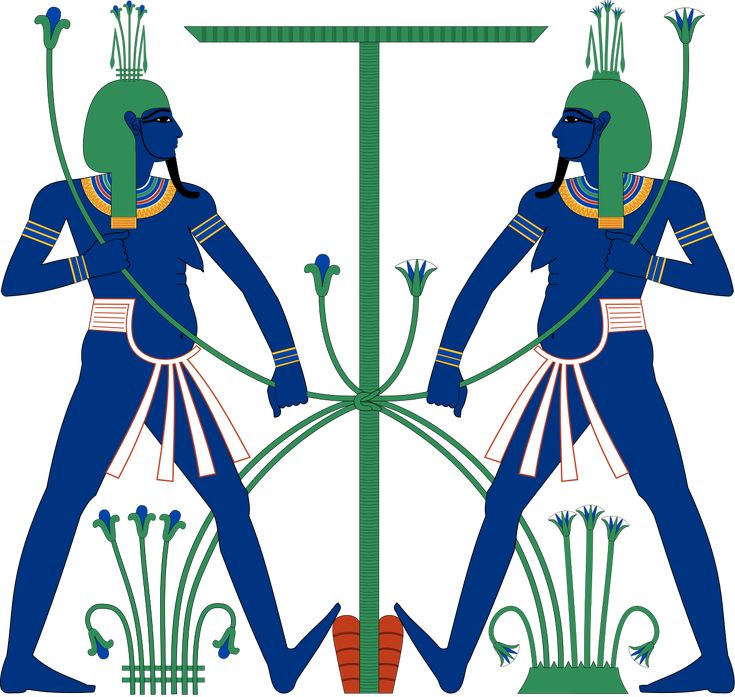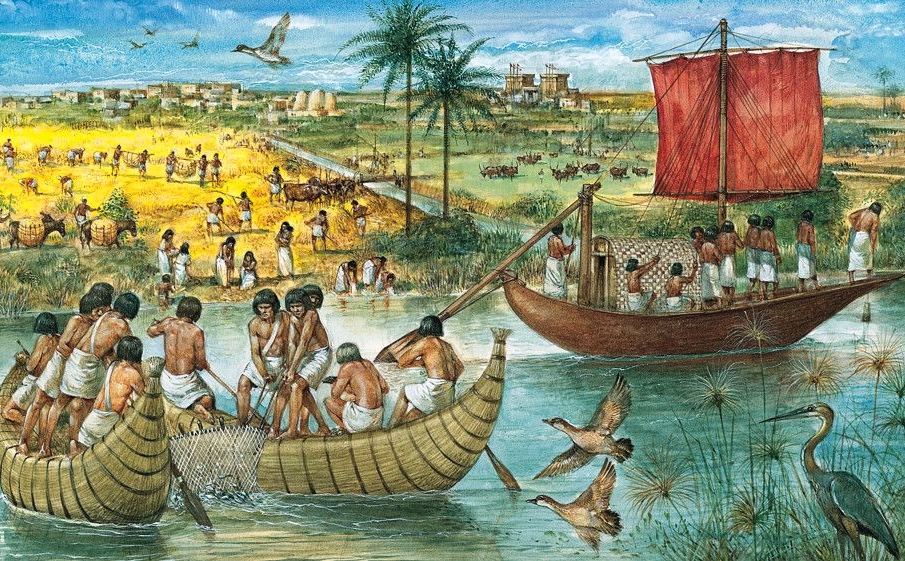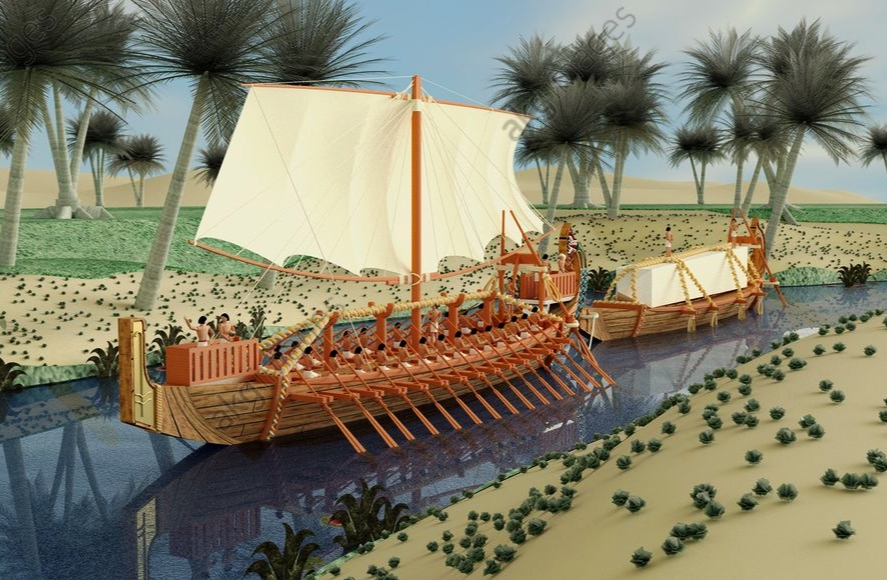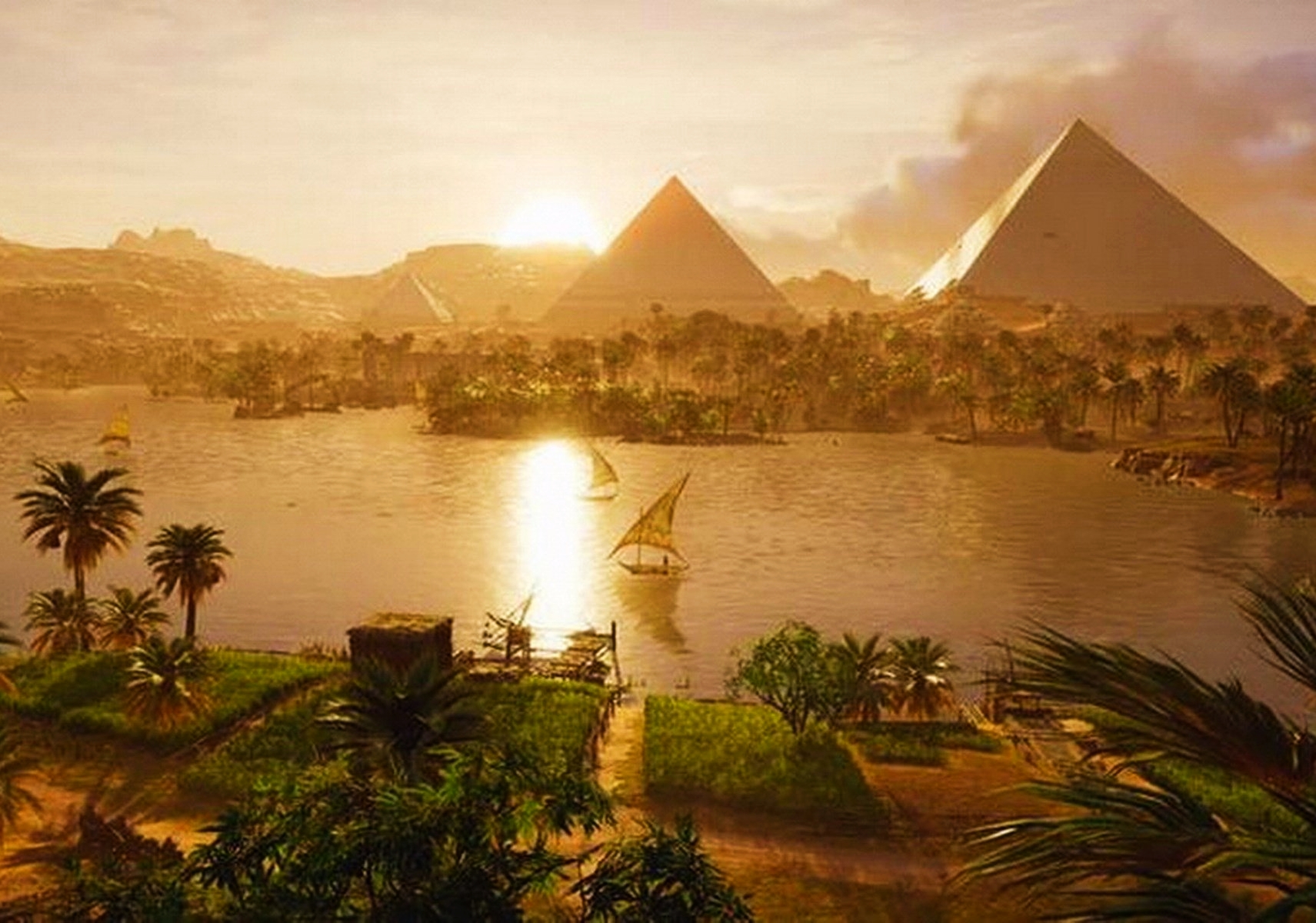The Nile and Ancient Egypt: An Intimate Relationship
The relationship between the Nile River and Ancient Egypt was nothing short of intimate and transformative. Stretching over 4,000 miles from its sources in East Africa to the Mediterranean Sea, the Nile was not merely a geographical feature but the very lifeblood of Egyptian civilization. This relationship, forged over millennia, shaped every facet of life in Ancient Egypt, from agriculture and trade to religion and culture. Understanding this profound connection offers insight into how the river influenced one of history’s most enduring civilizations.
1-A Divine Presence: The Nile in Religion and Mythology
The Nile River, often described as the lifeblood of Ancient Egypt, was not only crucial for agriculture and trade but also profoundly influenced the religious and cultural dimensions of this ancient civilization. For the Egyptians, the Nile was far more than a water source; it was a sacred entity entwined with their spiritual beliefs, cultural practices, and societal values.
Divine Connection: The Nile as a Sacred Entity
In Ancient Egyptian religion, the Nile was revered as a divine gift from the gods. Central to this reverence was the deity Hapi, the god of the annual inundation. Hapi was depicted as a robust figure with a large belly, symbolizing abundance and fertility. He was believed to control the flooding of the Nile, which was critical to the fertility of the land. The inundation was seen as a manifestation of Hapi’s blessings, and annual festivals celebrated his role in ensuring the prosperity of the land.

The river’s regular flooding, which deposited nutrient-rich silt on the fields, was interpreted as a divine affirmation of order and stability. This phenomenon was intricately linked to the concept of Ma’at, the ancient Egyptian principle of cosmic order, balance, and harmony. The predictability of the Nile’s flood was seen as evidence of divine order in the universe, reinforcing the Egyptians’ belief in a stable and well-ordered cosmos.
Religious Rituals and Festivals: Celebrating the Nile
The Nile’s importance in Egyptian religion was reflected in various religious rituals and festivals. The most significant of these was the “Feast of the Opening of the Inundation,” held to celebrate the beginning of the annual flooding. This festival involved offerings, prayers, and rituals to honor Hapi and ensure a bountiful harvest. Temples and religious sites along the Nile would host these celebrations, which included processions, feasts, and music.
Additionally, the river played a central role in the religious architecture of Ancient Egypt. Temples dedicated to river deities or associated with the Nile were often built along its banks. These temples not only served as places of worship but also as centers of economic and cultural activity. The proximity to the Nile made these temples key locations for observing and interpreting the river’s cycles.
Symbolism and Mythology: The Nile in Egyptian Lore
In Egyptian mythology, the Nile was imbued with rich symbolic meaning. It was often depicted as a primordial force, essential to creation and life. The river was associated with the myth of the “Ennead,” the group of nine deities worshipped primarily in Heliopolis, a major city along the Nile. According to these myths, the Nile’s waters were seen as originating from the tears of the goddess Tefnut, who was associated with moisture and fertility.
The Nile’s role in the afterlife was also significant. The river was often depicted in funerary art and texts, symbolizing the journey to the afterlife. The “Book of the Dead,” a key funerary text, frequently referenced the Nile as a protective and nurturing force that guided the deceased through the challenges of the afterlife. The imagery of the river was used to convey the idea of eternal life and rebirth, reinforcing the belief in a continuation of existence beyond death.
2-Cultural Significance: Art, Architecture, and Society
The Nile’s impact on Egyptian culture was evident in art, architecture, and daily life. The river was frequently depicted in Egyptian art as a symbol of abundance and prosperity. Artistic representations often showcased the lush landscapes along the Nile, highlighting the contrast between the fertile riverbanks and the surrounding desert.
Architecturally, the Nile’s presence was integral to the construction of temples, tombs, and monuments. Many of these structures were built near the river to take advantage of its resources and facilitate access. The proximity to the Nile also made these sites central to religious and economic activities.
In daily life, the Nile influenced social customs and practices. Boat processions on the river were common, serving both practical and ceremonial purposes. These processions, whether for transporting goods or participating in religious festivals, were an expression of the river’s central role in Egyptian society.
3-Water Management:
While the Nile’s annual flooding was generally predictable and peaceful, but it wasn’t always ideal. As some years, excessive flooding could devastate farms and settlements. while insufficient flooding might lead to famine. To optimize the river’s water usage throughout the year. the ancient Egyptians devised and implemented various water management techniques:
Basin irrigation: One of the most common water management techniques used by the ancient Egyptians was basin irrigation. This system involved constructing a network of earthen walls around farm fields to create basins. As during the Nile’s flooding, water would flow into these basins, and trapping it for later use. This allowed farmers to control the amount of water their crops received and to regulate the water level in the fields.
Canals: The ancient Egyptians built a network of canals to divert water from the Nile to different parts of the kingdom. These canals helped to distribute water more evenly. and to ensure that all areas had access to water for agriculture and other purposes.
Reservoirs: The Egyptians also constructed reservoirs to store water during the flooding season for use during the dry season. and this helped to ensure a reliable water supply throughout the year.
Water management officials: The pharaohs appointed specialized officials because of oversee water management. And to ensure that the river’s resources were used efficiently. These officials were responsible for maintaining the canals, reservoirs, and other water infrastructure.
Water rationing: because of periods of drought, the ancient Egyptians implemented water rationing measures. That was to conserve water and ensure that everyone had access to a basic supply.
3-Agriculture: Fertile Lands and Sustained Growth

The Nile’s most profound influence was on agriculture. The river’s annual inundation, or flooding, deposited nutrient-rich silt onto the surrounding lands, transforming the arid desert into fertile grounds ideal for farming. This predictable flooding was a cornerstone of Egyptian agriculture, allowing for the cultivation of staple crops such as wheat, barley, and flax. Here are some of the ways the Nile river impacted fertilization in ancient Egypt:
Nutrient-rich silt: The silt deposited by the Nile was rich in minerals like nitrogen, phosphorus, and potassium. Which are essential for plant growth.
Increased soil fertility: The regular flooding of the Nile helped to maintain and improve the fertility of the soil, Whish allowing farmers to grow crops year after year.
Stable food supply: The fertile land provided by the Nile enabled the ancient Egyptians to produce a stable food supply, and that was essential for their survival and prosperity.
Economic prosperity: The ability to produce surplus food allowed Egypt to sustain a large, centralized government and undertake large-scale construction projects. It also supported a thriving trade network, as surplus grains and other agricultural products were traded for goods not available locally.
4-Trade and Transportation: The Nile as a Highway

Trade was another area where the Nile’s influence was profoundly felt. The river served as a natural highway, facilitating the movement of goods and people between Upper and Lower Egypt and beyond. The Nile’s predictable flow and navigability made it the most efficient transportation route in ancient Egypt. Here are some of the key ways the Nile river impacted transportation in ancient Egypt:
Waterways: The Nile provided a natural waterway that connected different parts of Egypt. And facilitating the movement of goods and people from north to south and vice versa.
Canals: The ancient Egyptians constructed a network of canals, that branched off from the Nile, and expanding the reach of water transportation also connecting inland regions to the river.
Boats: The Egyptians developed various types of boats, including sailing vessels and barges, to navigate the Nile and its canals. Firstly, these boats were used to transport crops. Secondly, livestock. Thirdly, building materials. and also, other goods.
Trade: The Nile’s transportation network played a crucial role in Egypt’s trade with other civilizations, allowing the Egyptians to import and export goods. The Delta region, where the Nile empties into the Mediterranean Sea, became a major trading hub, And that enabled Egypt to trade with neighboring regions, including the Nubian Kingdoms to the south, the Levant to the northeast, and the Aegean world to the northwest. This trade network brought valuable resources like timber, incense, and precious stones into Egypt, while Egyptian exports included grain, papyrus, and linen.
Cultural exchange: The ease of transportation along the Nile facilitated cultural exchange and the spread of ideas. Egyptians could travel to different parts of the kingdom, interacting with people from diverse backgrounds and sharing their customs, traditions, and knowledge, technologies, and cultural practices, contributing to the rich tapestry of Egyptian civilization.

